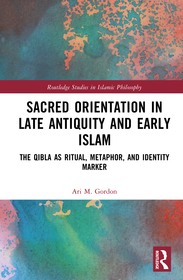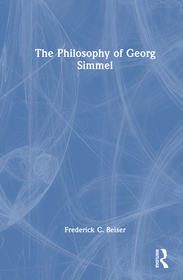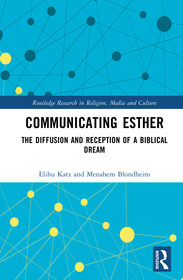
Sacred Orientation in Late Antiquity and Early Islam
The Qibla as Ritual, Metaphor, and Identity Marker
Series: Routledge Studies in Islamic Philosophy;
- Publisher's listprice GBP 145.00
-
69 273 Ft (65 975 Ft + 5% VAT)
The price is estimated because at the time of ordering we do not know what conversion rates will apply to HUF / product currency when the book arrives. In case HUF is weaker, the price increases slightly, in case HUF is stronger, the price goes lower slightly.
- Discount 10% (cc. 6 927 Ft off)
- Discounted price 62 346 Ft (59 378 Ft + 5% VAT)
Subcribe now and take benefit of a favourable price.
Subscribe
69 273 Ft

Availability
Not yet published.
Why don't you give exact delivery time?
Delivery time is estimated on our previous experiences. We give estimations only, because we order from outside Hungary, and the delivery time mainly depends on how quickly the publisher supplies the book. Faster or slower deliveries both happen, but we do our best to supply as quickly as possible.
Product details:
- Edition number 1
- Publisher Routledge
- Date of Publication 29 December 2025
- ISBN 9781032135083
- Binding Hardback
- No. of pages278 pages
- Size 234x156 mm
- Language English
- Illustrations 9 Illustrations, black & white; 9 Halftones, black & white 700
Categories
Short description:
Sacred Orientation in Late Antiquity and Early Islam: The Qibla as Ritual, Metaphor, and Identity Marker offers a groundbreaking study of how the qibla - Islam’s ritual direction of prayer - served not only as a sacred practice but also as a powerful marker of communal identity in Islam’s forma-tive centuries.
More
Long description:
Sacred Orientation in Late Antiquity and Early Islam: The Qibla as Ritual, Metaphor, and Identity Marker offers a groundbreaking study of how the qibla—Islam’s ritual direction of prayer—served not only as a sacred practice but also as a powerful marker of communal identity in Islam’s formative centuries.
Situating the qibla within the wider ritual culture of Late Antiquity, this book examines how sacred orientation shaped the evolving boundaries of religious belonging across the early Islamic world. It traces how the Qurʾān’s treatment of prayer direction emerged within a shared ritual discourse with Judaism and Christianity, and how the qibla became an embodied metaphor for inclusion and unity within an increasingly diverse Muslim community. The volume also explores interreligious polemics, legal and theological debates, and the symbolic significance of mosque architecture, maps, and scientific instruments, portraying the qibla as a dynamic vehicle for both religious expression and communal cohesion. From medieval controversies to contemporary technologies, Sacred Orientation argues that the qibla remains an “inexhaustible” ritual symbol— constantly evolving, yet deeply rooted in the construction and performance of Islamic identity.
Essential reading for scholars of Islamic studies, religious studies, ritual theory, and Late Antiquity, this book offers a fresh and richly contextualized perspective on one of Islam’s most enduring and meaningful practices.
MoreTable of Contents:
Table of Contents
Acknowledgements
Note on Transliteration
Abbreviations
Introduction
Defining the Qibla
The Qibla as Metaphor
Ritual Performance
Sacred Geography
Interrreligious Encounter
How to Read this Book
1. “Each has a Direction to which They Turn” Sacred Orientation in the Qurʾān and Religions of Late Antiquity
Late Antique Background: Lenses
Rabbinic Judaism
Early Christianity
Other Religious Cultures of Late Antiquity
Islam and the Qurʾān
Conclusion
2. Becoming the ‘People of the Qibla’: How an Unusual Phrase Created an Islamic “Big Tent”
Sinners Among the Ahl al-Qibla: The Mechanics of the Term as used in Tafsīr
Ahl al-Qibla in Sunni Creeds
Ahl al-Qibla in Some Shiʿi Writings
Implications of Inclusion Among the Ahl al-Qibla’
The Origins of the People of the Qibla
Ahl al-Qibla in Heresiographical Descriptions of Khārijites and Murjiʾites
Ahl al-Qibla in Ummayad-Era Revolts as Seen in Historiographic Literature
Ahl al-Qibla in the Teachings of Umayyad-Era Traditionists
Late First-/Early Eighth-Century Theological Texts Using Ahl al-Qibla
Conclusion
3. Does God’s Mind Change? The Qibla in Tenth-Century Interreligious Polemics
Did the Jews Change their Qibla?
The Qibla as a Symbol of Naskh in Early Islamic Literature
The Qibla as a Symbol in Medieval Islamicate Christian Literature
Revisiting Three Jewish Authors on the Qibla
4. A New Direction in Qibla Studies: Reconsidering Alignment and “Misalignment” of early Mosques in Light of Identity
Identity
Identity as Imagined
Identity as a Process
Identity as Inexhaustible
Sacred Geography and Identity in Early Islam
Early Mosque Orientations: The Hermeneutics of Architecture and Identity
The Inexhaustible Qibla: A Kind of Conclusion
Bibliography
Index













